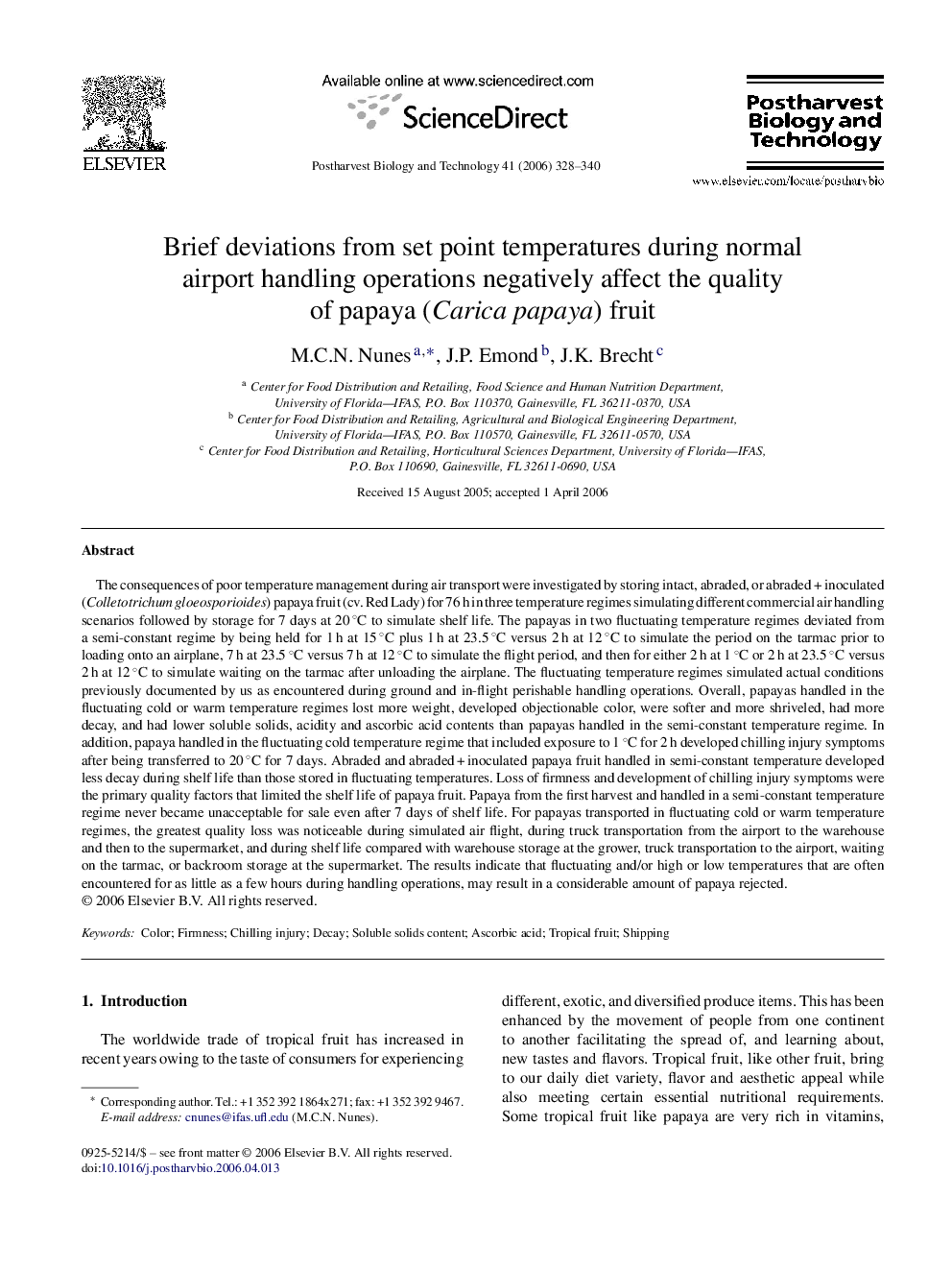| کد مقاله | کد نشریه | سال انتشار | مقاله انگلیسی | نسخه تمام متن |
|---|---|---|---|---|
| 4519792 | 1322853 | 2006 | 13 صفحه PDF | دانلود رایگان |

The consequences of poor temperature management during air transport were investigated by storing intact, abraded, or abraded + inoculated (Colletotrichum gloeosporioides) papaya fruit (cv. Red Lady) for 76 h in three temperature regimes simulating different commercial air handling scenarios followed by storage for 7 days at 20 °C to simulate shelf life. The papayas in two fluctuating temperature regimes deviated from a semi-constant regime by being held for 1 h at 15 °C plus 1 h at 23.5 °C versus 2 h at 12 °C to simulate the period on the tarmac prior to loading onto an airplane, 7 h at 23.5 °C versus 7 h at 12 °C to simulate the flight period, and then for either 2 h at 1 °C or 2 h at 23.5 °C versus 2 h at 12 °C to simulate waiting on the tarmac after unloading the airplane. The fluctuating temperature regimes simulated actual conditions previously documented by us as encountered during ground and in-flight perishable handling operations. Overall, papayas handled in the fluctuating cold or warm temperature regimes lost more weight, developed objectionable color, were softer and more shriveled, had more decay, and had lower soluble solids, acidity and ascorbic acid contents than papayas handled in the semi-constant temperature regime. In addition, papaya handled in the fluctuating cold temperature regime that included exposure to 1 °C for 2 h developed chilling injury symptoms after being transferred to 20 °C for 7 days. Abraded and abraded + inoculated papaya fruit handled in semi-constant temperature developed less decay during shelf life than those stored in fluctuating temperatures. Loss of firmness and development of chilling injury symptoms were the primary quality factors that limited the shelf life of papaya fruit. Papaya from the first harvest and handled in a semi-constant temperature regime never became unacceptable for sale even after 7 days of shelf life. For papayas transported in fluctuating cold or warm temperature regimes, the greatest quality loss was noticeable during simulated air flight, during truck transportation from the airport to the warehouse and then to the supermarket, and during shelf life compared with warehouse storage at the grower, truck transportation to the airport, waiting on the tarmac, or backroom storage at the supermarket. The results indicate that fluctuating and/or high or low temperatures that are often encountered for as little as a few hours during handling operations, may result in a considerable amount of papaya rejected.
Journal: Postharvest Biology and Technology - Volume 41, Issue 3, September 2006, Pages 328–340